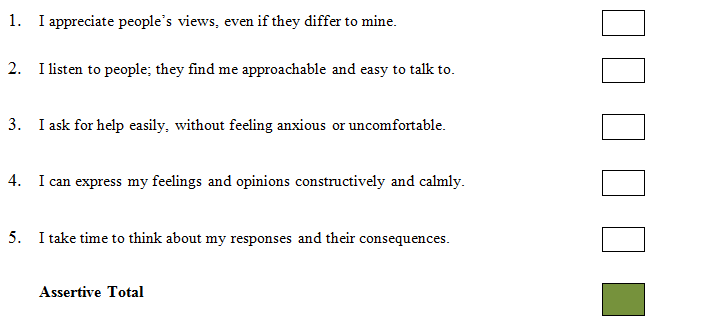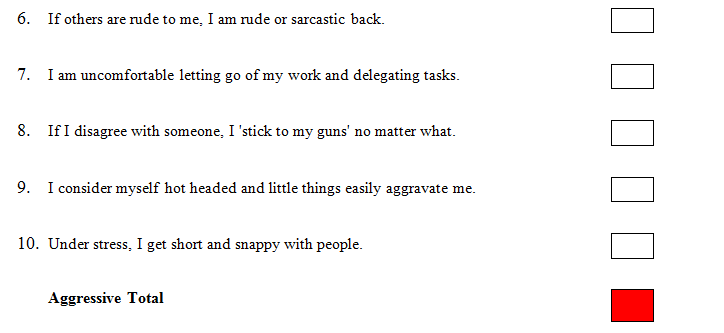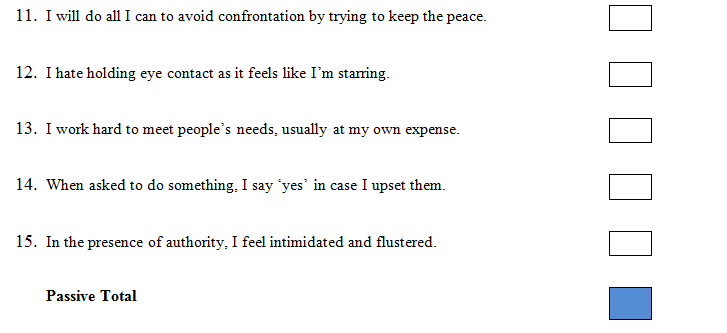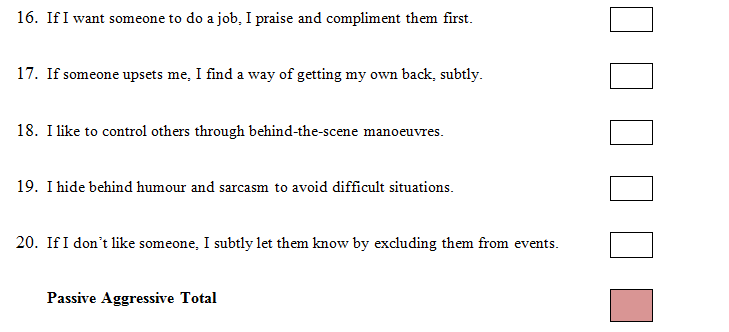20 questions to find out how assertive and self-aware you really are

Understanding how you should deal with and judge different kinds of behaviours in different situations takes a high level of self-awareness. This does not mean you have to be a chameleon. It is about considering the outcome you need, recognising that each situation or person may require a different approach, and adapting your style appropriately to achieve a win-win.
The following questionnaire will teach you more about your behavioural patterns, how much assertiveness you currently adopt and therefore where you need to focus your development.
There are a limited number of questions for you to answer so the result is not necessarily conclusive, although it will indicate your preference, which lends itself to further self-study.
20 self-assessment questions





Understanding your scores
You can now interpret your scores using the following information:
- The highest of your four totals may indicate that this is your predominant behaviour.
- If that highest score is 15-20, this may indicate a particularly strong preference for that behaviour.
- The lowest of all your totals may indicate that this is your least preferred pattern of behaviour.
- If that lowest score is 10 or below, may indicate how infrequently, you use this behaviour.
- If all your totals are low, this may indicate an overall level of passivity, showing a lack of self-assurance and doubt in your ability when answering the questions.
- If assertive and passive totals are close, this may indicate a strengthening of your assertive approach. It shows you are asserting yourself more often, although a predominant passive insecurity influences a retreat to a people-pleasing position.
- If passive and aggressive totals are close, this may indicate a low self-esteem and insecurity, which underlies both behaviours. You may, for example, bottle up emotions and then explode with frustration when you can take no more. You then feel guilty about your outburst and return to a passive standpoint.
- If assertive and aggressive totals are close, this may indicate an imbalance of your self-expression and a dominant feeling of frustration. As you experiment with your assertion, you may still find yourself shouting or finger pointing when you struggle to get your views across. This will rebalance the more you practise.
- Return to the three non-assertive question sets and review your 3 and 4 scores. Consider and journalise the reasons behind your scores to those specific questions.
- Return to the assertive question set and review your 1 and 2 scores. Explore what stops you from scoring higher and journalise your results.
- Return to your assertive question set and review your 3 and 4 scores. Acknowledge the situations where you already behave assertively and explore what gives you the confidence to behave this way.
How you can use these results to your advantage
The questionnaire helps you build a better understanding of your behaviour patterns and you can now build on your discoveries.
1. Based on the questionnaire exercise, test out your results over the next two weeks. Form a more concrete analysis by talking to people you trust about how they see you; notice your behaviours in action and take note of the patterns that are most dominant for you.
2. Explore whether these behaviour patterns are different at work versus at home. If they are different, explore why that might be and what is it about one domain that produces a more confident behaviour the other?
3. Notice specific situations or people that influence you to react in an unassertive way. What is it about the person or event that provokes that reaction?




